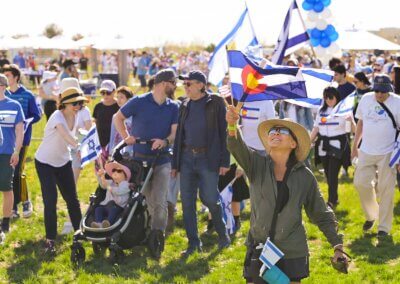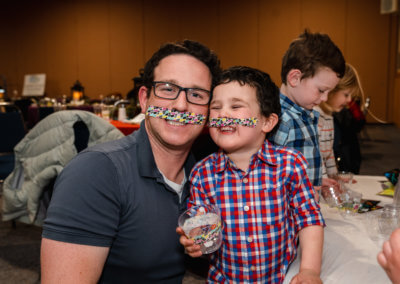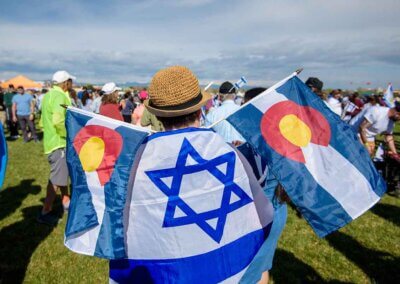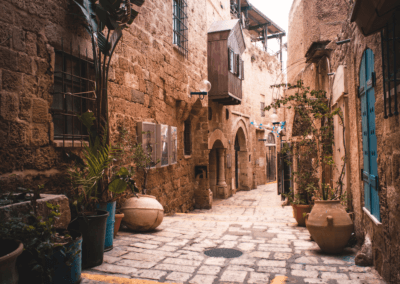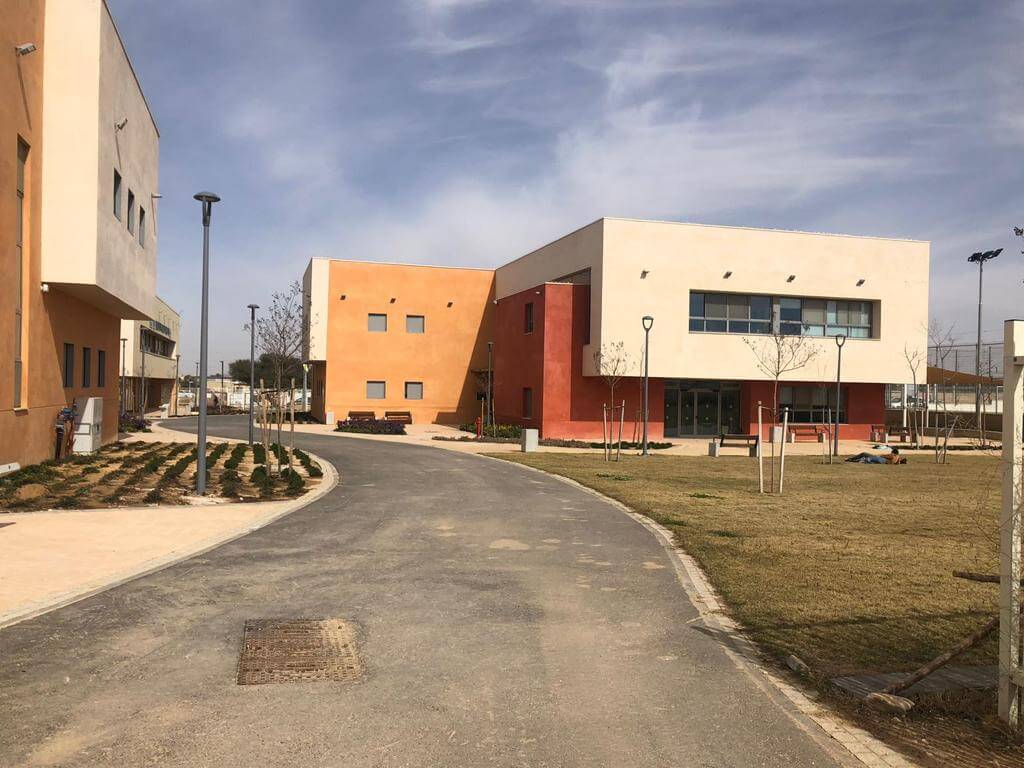Forging a Lasting Partnership with Ramat HaNegev
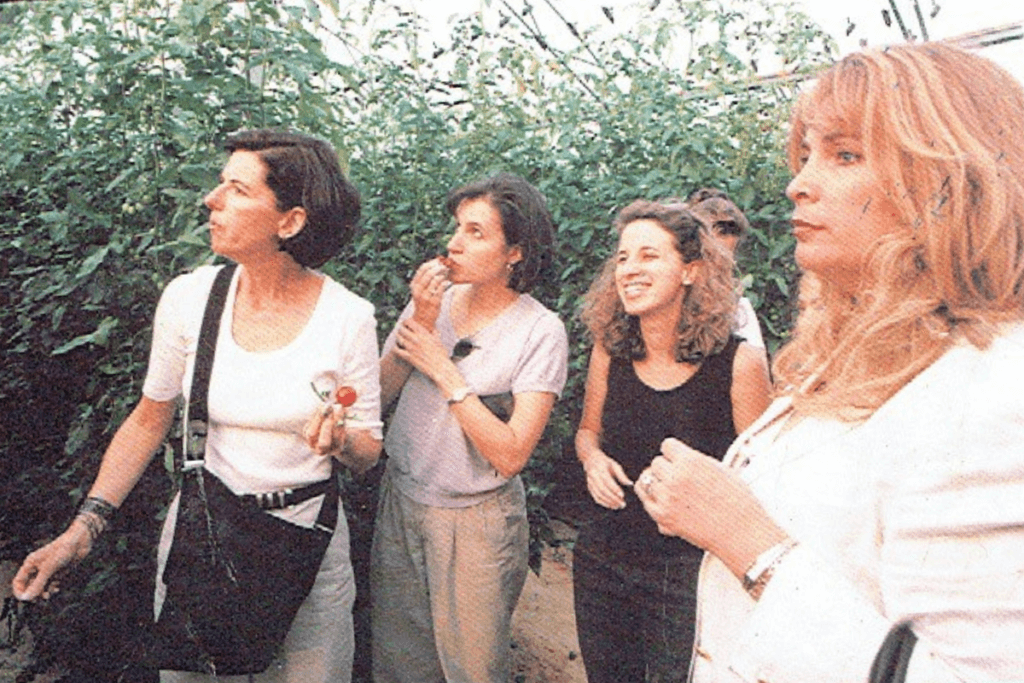 The snapshot, taken 23 years ago, freezes a moment that would have an impact for years—even generations—to come.
The snapshot, taken 23 years ago, freezes a moment that would have an impact for years—even generations—to come.
Four Colorado women stand inside a tomato greenhouse in Ramat HaNegev, the largest jurisdiction of land in Israel with the smallest population. At far left in the photo, Irit Waldbaum might well have been looking into the future. She is a woman on a mission, both literally and figuratively.
Standing next to her, Lisa Reckler Cohn samples a tomato grown in the desert by enterprising Israeli pioneers.
Next to her, Jen Gilbert-Kaufmann is smiling. She is a young staffer from the organization sponsoring the trip, the Allied Jewish Federation of Colorado, one of JEWISHcolorado’s antecedent organizations.
And finally, in the right corner of the photo stands Lisa Belkov Snyder, dressed, as she admits, “like I am going to a business meeting.” More than two decades later, Snyder still remembers the tomato she ate in that tent. “It was an emotionally delicious tomato because of everything that had happened to make this tomato exist,” she says. “And there were hundreds of thousands of them in this hot house. It was incredible.”
Part of a larger group, the four women had traveled to Israel on a mission to find a new Israeli partner community for Colorado Jews who wanted to show their support for Israel.
In November 2022, more than two decades after their trip, Interim President and CEO Renée Rockford asked Waldbaum, Cohn, Snyder, and Gilbert-Kaufmann to reunite at JEWISHcolorado, to meet with Mayor Eran Doron from Ramat HaNegev, and to reminisce about a mission that has led to deep and long-lasting connections between Israel and Colorado.
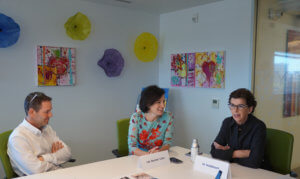 The initiative
The initiative
More than two decades ago, Waldbaum was chairing the Israel and Overseas Committee of the Federation. When it came time to renew an existing Colorado partnership with a community in Israel, she had the courage to say no.
“It was not my vision for a partnership,” she recalls. “It was a one-way relationship. It was not people to people.”
She pulled together a committee and made a list of criteria she wanted for a new partnership. Then she reached out to a contact at United Jewish Appeal (UJA) in New York and said, “I need help!”
Around that same time, Cohn had traveled on a newlywed mission to Israel through the Federation. When she returned, she remembers David Engleberg encouraging her to become more involved in the work of the Jewish community—starting with Waldbaum’s latest project.
“It is a reflection of Irit’s brilliance to structure it the way she did,” Cohn says. “The partnership needed to be more than Israel saying, ‘We need you,” and us saying ‘Here’s our money.’ It needed two-way engagement, actually building connections between people.”
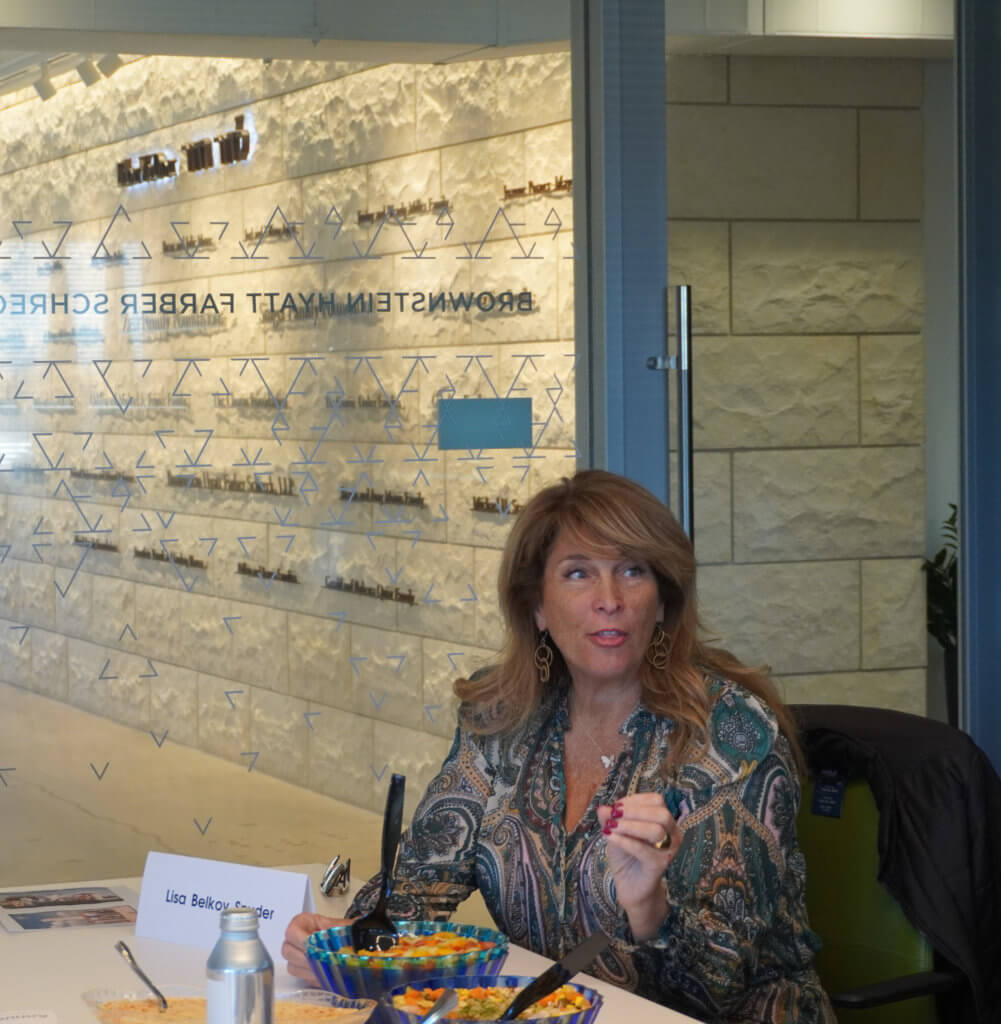 Waldbaum’s contact at UJA came back with a list of five or six projects in Israel and a directive: “Go see them and let me know what you like.”
Waldbaum’s contact at UJA came back with a list of five or six projects in Israel and a directive: “Go see them and let me know what you like.”
At the time, Snyder was a recent East Coast transplant to Denver. She laughs when she recalls her reaction to the proposal that she travel to Israel on a fact-finding mission. “I said, ‘I don’t even know how to get around Denver!’” She chose to go and today says it was “life-changing.”
It fell to Gilbert-Kaufmann, the Federation staffer, to do the pre-trip research. “When we arranged the trip, we may have slanted the experience,” she recalls. “We saved the stop in Ramat HaNegev for last, hoping the outcome would be what we wanted.”
The decision
“Every place we went on that trip, the appeal was that they needed our help,” Cohn recalls. “And in some cases, there were a lot of needs. But we felt it would be a one-way relationship.”
When the Federation mission group arrived in the Negev, however, the area checked nearly every box on their list of criteria for a partnership.
 Gilbert-Kaufmann remembers the influence Shmuel “Shmulik” Rifman, the beloved long-time mayor of the Ramat HaNegev Regional Council, had on their decision.
Gilbert-Kaufmann remembers the influence Shmuel “Shmulik” Rifman, the beloved long-time mayor of the Ramat HaNegev Regional Council, had on their decision.
“Shmulik had a vision about creating a real people-to-people experience, with the possibility of exchanges on so many levels—government and youth, water and agriculture, science and innovation,” Gilbert-Kaufmann says. “He felt that because we had so much in common, this partnership could go on for decades.”
“We said, ‘This is it,’” Waldbaum recalls. “It was the last frontier of Israel. The people of the Negev were like Colorado people. They were pioneers, they were outdoorsy, they were exercising and riding their bikes. Everyone had a dog!”
The connections
Shmulik’s vision came to pass. More than two decades after the travelers from Colorado chose to partner with Ramat HaNegev, the connections between Colorado and the region continue to proliferate. Donations to JEWISHcolorado have supported a new local high school in the region, eliminating the need for students to ride 60 minutes to school, a barrier to education for many. JEWISHcolorado has also helped to launch a therapy center for families with children who have special needs, to develop Bedouin tourism opportunities and education for young people in the Bedouin community, and to create education opportunities for students in the village of Nitzana.
As he met with the four women, Mayor Doron recalled coming to Colorado for the first time in 2005 to train as a young volunteer with Boulder Search and Rescue. Some of the Colorado families that hosted the visitors have remained in close touch with those young volunteers and today, the children of the Israelis—who were not even born at the time of their parents’ first visit—are following in their parents’ footsteps and applying to be Shinshinim in Colorado.
Waldbaum returns to Ramat HaNegev whenever she travels to Israel. On a visit last year, she saw tenth graders from Denver Jewish Day School attending school with local students during a six-week Hebrew Immersion Program. She could not tell the difference, she says, between the Colorado students and the Israeli students. “This was our original vision,” she says. “Colorado families have friends in Israel and Israelis have friends in Colorado.”
Waldbaum also has continued networking, introducing other generous donors to the region. She points out that Temple Sinai and Temple Emanuel now make mission trips there. “They go because it has become part of the fabric of the Denver Jewish community,” she says. “And everyone is so welcoming.”
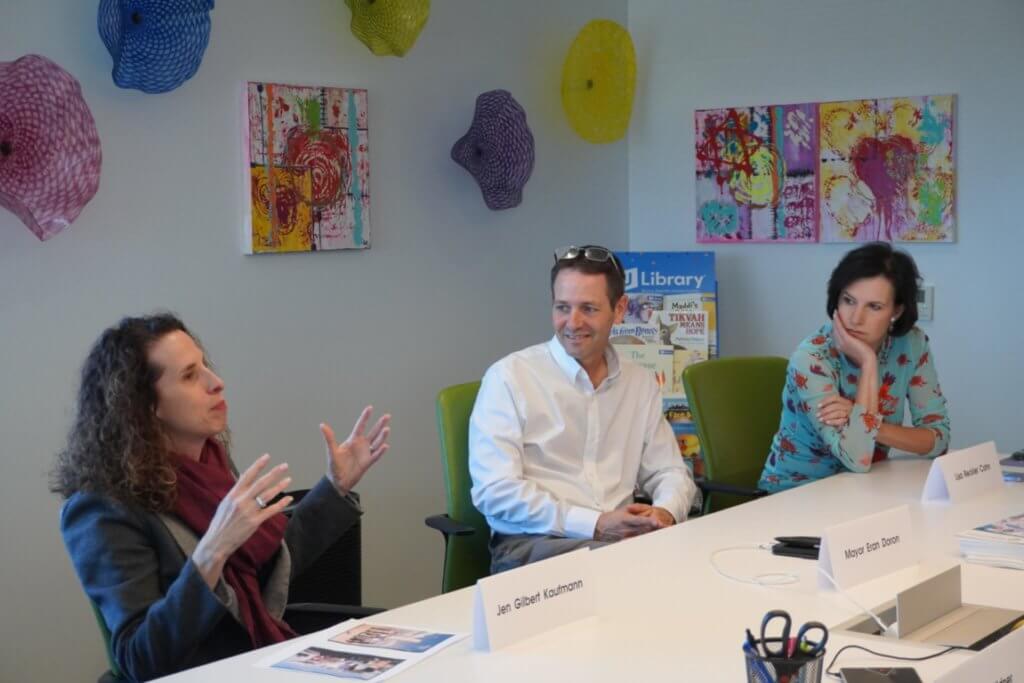 Gilbert-Kaufmann talks about how Colorado state and national legislators have made trips to visit Ramat HaNegev and to learn from the pioneers who have created flourishing communities and agriculture in the desert. “They are making the desert bloom,” Gilbert-Kaufmann says. “You can see the tomatoes and the strawberries. When we take people there, it brings it home, regardless of your politics.
Gilbert-Kaufmann talks about how Colorado state and national legislators have made trips to visit Ramat HaNegev and to learn from the pioneers who have created flourishing communities and agriculture in the desert. “They are making the desert bloom,” Gilbert-Kaufmann says. “You can see the tomatoes and the strawberries. When we take people there, it brings it home, regardless of your politics.
JEWISHcolorado’s Shaliach, Itai Divinsky, fields a question at the meeting about the Joyce Zeff Israel Study Tour: Do students go to Ramat HaNegev? Yes, Divinsky says. In fact, IST has been reconfigured to allow Colorado students to spend even more time in the region, and students from Ramat HaNegev join the IST students on the bus for a week.
Sitting in this meeting is a living embodiment of the ties between two regions. May Sabri was a member of the first graduating class in the new high school in Ramat HaNegev. Today, she is living with a host family in Colorado and serving for a year as a JEWISHcolorado Shinshinim, educating Colorado youth about Israeli culture and society, the Hebrew language, current affairs, and Jewish tradition.
Rockford points out that the relationship with Ramat HaNegev is symbiotic. “Last December, JEWISHcolorado launched fund-raising for the families affected by the Marshall Fire,” she says. “Among the first donations to come in was a gift from the people of Ramat HaNegev. That is the strength of our partnership.”
“All these connections are huge, huge, huge,” responds Mayor Doron. “The JEWISHcolorado relationship feels natural, and the close friendship remains. In Israel, we say ‘If someone sneezes in Ramat HaNegev, someone in Colorado says “labruit.”
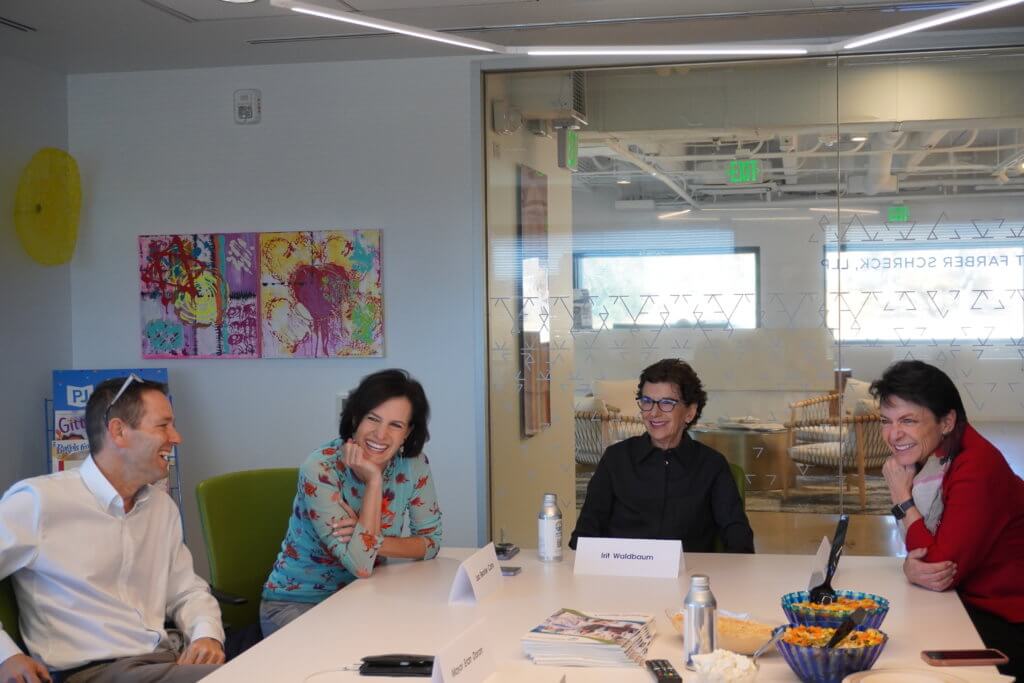 The future
The future
As the meeting closes, Rockford asks the group to reflect on their hope for the future of the partnership, and Mayor Doron talks about governing in ways that honor the past and look ahead to the future.
“In 2048, Israel’s 100th year, we expect that the state of Israel will stand at 15 million people,” he has written. “This growth will not be possible without the Negev’s development.”
Doron is confident his generation will continue the work of those who came before—like Shmuel Rifman. Addressing the four women in the room, he said, “You have built such a great foundation connecting people, not just organizations. When the foundation is good, the building will be good as well. I am optimistic about the future of our relationship because of the foundation you built.”
Gilbert-Kaufmann sums up her hope for the future simply: “For me, it’s about L’dor V’dor,” she says. “We have lost so many people who were there for the founding of this partnership and the early years. But now I have two children and I have taken them to Ramat HaNegev. More than 20 years later, there is a new generation and it continues.” She goes on to remind the group that her daughter asked friends and family to make donations to the Ramat HaNegev children’s therapy center in lieu of gifts at her bat mitzvah. She raised more than $10,000.
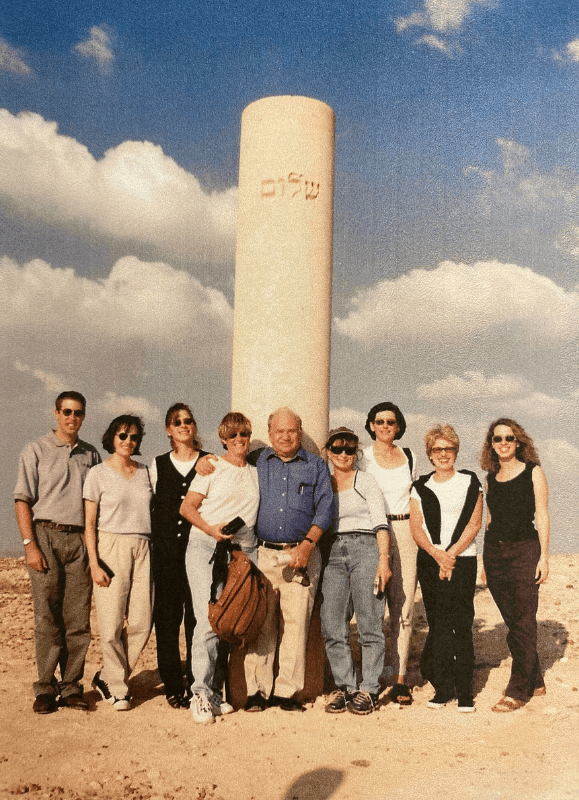 “When we first went over, we never thought that the people with us would be gone now,” Gilbert-Kaufmann says. “But my daughter is planning to go to Ramat HaNegev and live with her friends and create more connections and relationships. The people-to-people partnerships continue.”
“When we first went over, we never thought that the people with us would be gone now,” Gilbert-Kaufmann says. “But my daughter is planning to go to Ramat HaNegev and live with her friends and create more connections and relationships. The people-to-people partnerships continue.”
Despite her reluctance to go on the initial trip, Snyder has continued working in different parts of Israel and the connection she feels with the country is deep. “As a Jew, the whole of Israel is an extra organ in your body,” she says. “You can’t see it, but you feel it and you would die without it.”
Her work has taken her to other areas of the country, but her loyalty to Ramat HaNegev remains.
“As we say in the South where I am from, ‘Never forget who brought you to the dance,’” she says. “And that was Ramat HaNegev.”
Finally, for Waldbaum, whom the other women honor as their leader in the original mission, hope and the future are inextricably bound together. “The partnership with Ramat HaNegev has exceeded my expectations,” she says. “I hope it thrives and continues because I am looking ahead for my grandchildren.”

